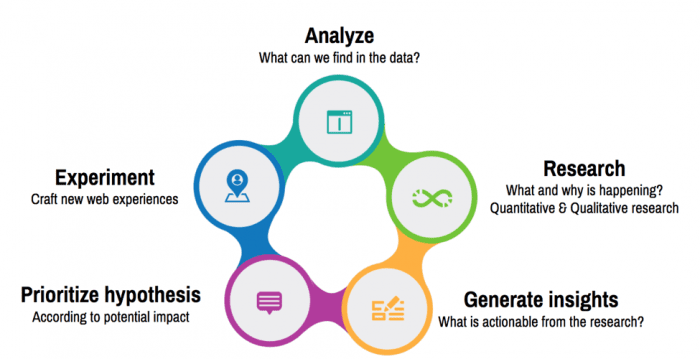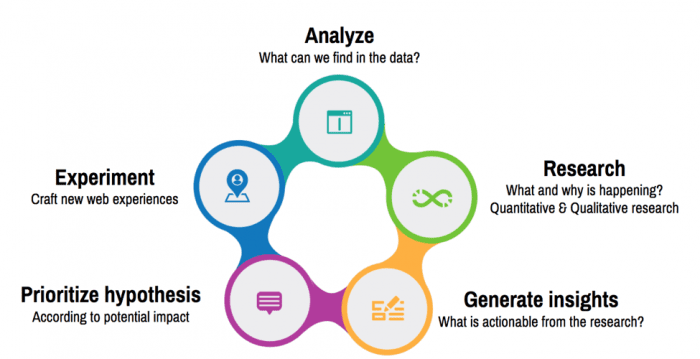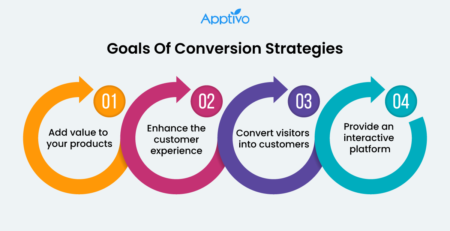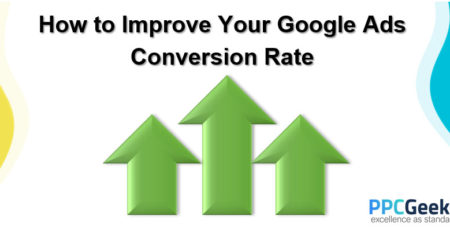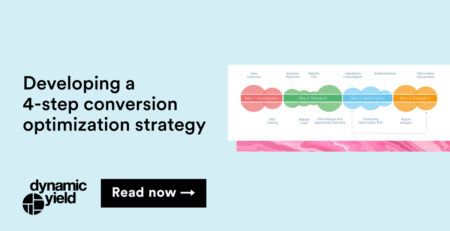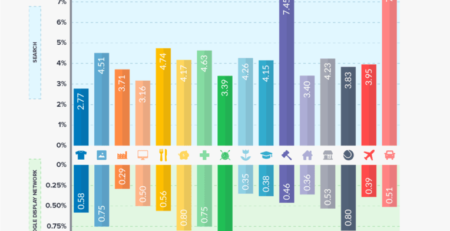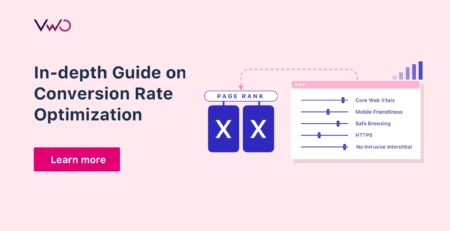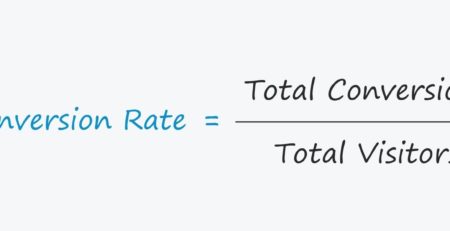What Can Help You Analyze Conversion Rate Optimization?
Hey there! Are you wondering what can help you analyze Conversion Rate Optimization? Well, you’ve come to the right place! In this article, we’ll explore some valuable tools and techniques that can assist you in improving your website’s conversion rate.
Getting the most out of your website is crucial, whether you’re selling products, providing services, or just seeking to engage your audience. Conversion Rate Optimization (CRO) is all about maximizing the number of visitors who take the desired action on your website, such as making a purchase or signing up for a newsletter.
So, how can you analyze CRO and take steps to improve it? We’ll dive into the world of heatmaps, A/B testing, and user feedback to uncover insights and make data-driven decisions that can boost your conversion rates. Ready to learn more? Let’s get started!
When it comes to analyzing conversion rate optimization, there are several tools that can help you. One essential tool is web analytics software, which allows you to track visitor behavior and identify areas for improvement. A/B testing platforms are also crucial for testing different variations of your website to determine what works best. Heatmap tools provide valuable insights into user behavior and help identify where visitors are clicking and scrolling. Surveys and feedback tools allow you to gather feedback directly from your visitors. Finally, session recordings enable you to watch how users interact with your website. By utilizing these tools, you can gather valuable data to optimize your conversion rates.
What Can Help You Analyze Conversion Rate Optimization?
In today’s digital landscape, businesses are constantly striving to improve their online conversion rates. Whether you’re an e-commerce giant or a small start-up, understanding and analyzing conversion rate optimization (CRO) is crucial for success. But what exactly does it entail, and how can you effectively analyze it to drive better results? In this article, we’ll delve into the world of CRO and discuss the key factors that can help you analyze and optimize your conversion rates.
Importance of Conversion Rate Optimization
CRO is the process of fine-tuning your website, landing pages, and user journey to increase the percentage of visitors who take the desired action, such as making a purchase or submitting a lead form. By improving your conversion rates, you can maximize the return on investment for your marketing efforts and drive more revenue for your business. However, analyzing CRO goes beyond simply tracking metrics and numbers. It requires a deep understanding of user behavior, a data-driven approach, and a continuous optimization mindset.
1. Understanding Your Target Audience
Before you can effectively analyze CRO, you need to have a thorough understanding of your target audience. This goes beyond basic demographics and requires diving into their motivations, pain points, and desires. Conducting market research, customer surveys, and user testing can provide valuable insights into what drives your audience to take action. By understanding their needs and behaviors, you can tailor your website and content to address their specific pain points and encourage conversions.
In addition to qualitative research, quantitative data can also offer valuable insights. Analyzing website analytics, heatmaps, and conversion funnels can help identify potential bottlenecks or areas of improvement. By combining both qualitative and quantitative research, you can gain a comprehensive understanding of your target audience and make data-driven decisions to optimize your conversion rates.
2. Analyzing User Experience
A seamless and intuitive user experience is crucial for driving conversions. If visitors encounter friction, confusion, or frustration while navigating your website, they are likely to abandon their journey and look elsewhere. Analyzing the user experience can help identify and address any pain points in the conversion process.
Start by conducting a thorough audit of your website’s design, navigation, and overall usability. Are the call-to-action buttons prominent and enticing? Is the checkout process streamlined and user-friendly? Are the forms easy to fill out? These are just a few aspects to consider. Heatmaps and user recordings can provide valuable insights into how visitors interact with your website, highlighting areas for improvement.
You can also conduct A/B tests to compare different variations of your website or landing pages and determine which one performs better in terms of conversions. By constantly evaluating and optimizing the user experience, you can remove any barriers to conversion and improve overall performance.
3. Leveraging A/B Testing
A/B testing is a powerful technique for analyzing and optimizing conversion rates. By comparing two versions of a webpage or element, you can determine which one drives better results. This process involves splitting your website traffic between the two variations and measuring the conversion rates for each.
When conducting A/B tests, it’s important to focus on one element at a time to accurately measure its impact on conversions. This could be the headline, the call-to-action button, the placement of testimonials, or any other element that could influence user behavior. By systematically testing different variations, you can identify what resonates best with your audience and make data-driven decisions to improve your conversion rates.
Keep in mind that A/B testing is an ongoing process. As consumer behavior and preferences evolve, so should your website and optimization efforts. Continuously testing and refining your website will enable you to stay ahead of the competition and ensure that your conversion rates remain optimized.
4. Gathering and Analyzing Data
Data is the backbone of effective CRO analysis. It provides insights into visitor behavior, preferences, and conversion patterns. Implementing robust analytics tools, such as Google Analytics, can help you collect and analyze valuable data that can inform your optimization efforts.
Key metrics to monitor include conversion rate, bounce rate, average time on page, and exit rates. Additionally, tracking user behavior with tools like session recordings and click maps can uncover valuable insights into how visitors engage with your website and where they might encounter obstacles.
With the right data at your fingertips, you can identify trends, uncover opportunities, and make data-driven decisions to optimize your conversion rates. Regularly reviewing and analyzing your data will enable you to stay informed about your website’s performance and make timely adjustments to improve your conversion rates.
Enhancing Conversion Rate Optimization: Expert Tips
In addition to the key factors mentioned above, there are several expert tips and best practices that can further enhance your CRO efforts. Here are three additional areas to focus on:
1. Mobile Optimization
With the increasing use of smartphones, it’s crucial to optimize your website for mobile devices. A responsive design ensures that your website looks and functions seamlessly across different screen sizes, providing a positive user experience. Mobile-friendly forms, easy navigation, and quick loading times are essential for driving conversions on mobile devices.
2. Personalization
Personalizing the user experience can significantly impact conversion rates. By tailoring your content and offers to individual users based on their preferences, browsing history, or demographic information, you can create a more personalized and engaging experience. This can be achieved through dynamic website content, personalized product recommendations, or targeted email campaigns.
3. Social Proof
Integrating social proof into your website can instill trust and credibility, encouraging visitors to convert. Displaying customer reviews, testimonials, or case studies can showcase positive experiences and provide social proof of the value you offer. Additionally, incorporating trust badges or security seals can alleviate any concerns visitors may have about sharing sensitive information.
Conclusion
Analyzing conversion rate optimization is a continuous process that requires a deep understanding of your target audience, the user experience, and data analysis. By following the key factors outlined in this article, such as understanding your target audience, analyzing user experience, leveraging A/B testing, and gathering and analyzing data, you can optimize your conversion rates and drive better results for your business. Additionally, incorporating expert tips like mobile optimization, personalization, and social proof can further enhance your CRO efforts. Stay committed to iterative improvements and keep a close eye on your data to ensure ongoing success with conversion rate optimization.
Key Takeaways: What Can Help You Analyze Conversion Rate Optimization?
- 1. Understand your target audience – Knowing who you’re trying to reach is essential for optimizing your conversion rates.
- 2. Track and analyze data – Use tools like Google Analytics to monitor and analyze your website’s performance and conversion rates.
- 3. Conduct A/B testing – Experiment with different versions of your website to see which elements lead to higher conversion rates.
- 4. Improve website usability – Make sure your website is user-friendly, with clear navigation and easy-to-use forms.
- 5. Optimize landing pages – Create compelling and relevant landing pages that align with your marketing campaigns to boost conversions.
Frequently Asked Questions
[Two-line introduction]
How can I analyze conversion rate optimization?
Analyzing conversion rate optimization involves several key steps. First, you need to collect and analyze data on user behavior on your website. You can use tools like Google Analytics or heatmapping software to gather information on page views, click-through rates, and user engagement. Once you have the data, you can identify patterns and trends that can help you optimize your conversion rate.
Next, it’s important to conduct A/B testing. This involves creating multiple versions of your website or landing page and testing them with different segments of your audience. By comparing the performance of these different versions, you can determine which elements are most effective in driving conversions. Finally, it’s essential to continuously monitor and analyze your conversion rate over time. This allows you to identify any fluctuations or changes in user behavior and make necessary adjustments to your optimization strategies.
Remember, analyzing conversion rate optimization is an ongoing process that requires data-driven decision-making and regular testing to ensure continuous improvement.
What role does website design play in conversion rate optimization?
Website design plays a crucial role in conversion rate optimization. A well-designed website can drive user engagement, increase trust, and ultimately lead to higher conversion rates.
An intuitive and user-friendly navigation structure is essential for guiding visitors through your website and helping them find what they’re looking for. In addition, a visually appealing design attracts and retains the attention of users, making them more likely to stay on your site and explore further. Strategic placement of call-to-action buttons and forms can also influence user behavior and encourage conversions.
Moreover, a responsive design that adapts to different devices and screen sizes is vital. With the increasing use of mobile devices, it’s essential to provide a seamless browsing experience across all platforms. User experience is a significant factor in conversion rate optimization, so investing in professional website design can yield significant benefits in boosting your conversion rates.
Summary:
So, to summarize, conversion rate optimization (CRO) is all about making your website better. It involves understanding your audience, testing different methods, and making changes to improve the number of visitors who take action.
Some helpful tools for CRO include analytics software, A/B testing, heatmaps, and user feedback. By using these tools, you can gather data and insights to understand what is working and what needs improvement on your website.
Remember, CRO is an ongoing process. By continuously analyzing and optimizing your website, you can increase your chances of converting more visitors into customers. Keep learning and experimenting, and you’ll see your conversions soar!

